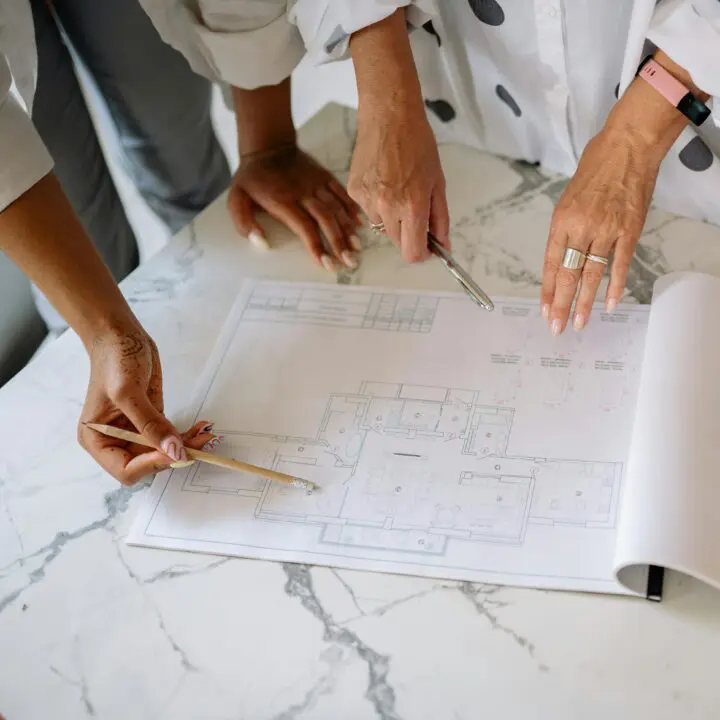How Technology is Democratizing the Built Environment
“Democracy is messy, and it’s hard” said Robert Kennedy, Jr.
Text
“Democracy is messy, and it’s hard” said Robert Kennedy, Jr. about the political landscape. Current trends in the built environment may doubly merit that observation. In a democracy where everyone has a vote and a say on a wide variety of issues, decision-making can get complicated. In a very similar way, technology is democratizing how we design and build our communities.

On the one hand, technology can flatten inefficient hierarchical decision-making processes and broaden the base of collaborative inputs. On the other hand, these emerging decentralized paradigms have their own complexities. When applied to planning, funding, and constructing the built environment, a whole new batch of risks is created. In other words, while technology is enabling more democratically-inspired processes that will make the design/construction industry better in the end, it may get a lot messier short-term. However, innovative risk-takers are going to lead the way, setting new standards and rules for the rest.
Democratization in energy, project finance, and project delivery
It’s no secret that we’re in the early stages of an energy transformation—moving from a centralized, linear model of energy generation and distribution to a more distributed and decentralized paradigm. Because of cost declines in clean technology (e.g., solar and battery storage) combined with public policy initiatives that incentivize their use (e.g., renewable portfolio standards, electric vehicles, clean fuel standards, building codes, emissions reduction goals), energy generation is happening all over the grid and in closer proximity to the consumers themselves—the ”edge of the grid,“ as some call it. This more ”democratic” model—where multiple stakeholders (businesses as well as individuals) can influence energy generation and monetize and trade it—disrupts traditional utility business models. As a result, utilities are trying to figure out their new role.
Now that utilities can share responsibilities for energy generation, how do they protect the grid from new entry points, especially as it relates to cyber? How do they manage energy flows and still maintain demand for their communities? How do they stay profitable, or at least financially stable? Should there be shared maintenance costs? What do prosumers get paid for excess energy that goes back into the grid? Do they need to worry about defection altogether from the grid? There are a lot of questions and not a whole lot of answers—yet. Eventually, when the new rules of engagement are agreed upon, all of society will be better for it because ultimately we are “greening” our energy. In the meantime, it’s getting pretty messy for utilities, regulators, and everyone else who has a stake in the energy sector.

And it’s not just about energy generation. Technology is driving transformations in demand-side management, energy efficiency, and battery storage. As a consequence, new, innovative partnership models are evolving between building owners and utilities in which commercial and public buildings will likely (in the not-too-distant future) act as flexible demand and production ”nodes” on the grid, giving utilities the baton and rostrum to more efficiently direct the orchestral flows of energy. This will also mean that clean energy sources can be better optimized as we transition away from fossil fuel sources, which in turn will lead to reduced emissions.
These kinds of models, if developed right, would also offer building owners new ways to monetize the value of their assets. Again, this is democracy at play: building owners, by choice, will be in a position where they are able to directly influence grid flows. It’s complicated and messy and there’s no roadmap, but eventually it’s going to be a good thing and we’ll someday wonder why we didn’t do this before.
Funding and financing models are also decentralizing. Technology, along with the sharing economy ethos of collaborative resourcing is one major culprit. Previously siloed institutions, such as private investors and banks, weren’t interested in collaborating and sharing investment risks with non-profits and governments.
Now, innovations such as public-private partnerships (P3s), where governments and private investors pool equity and debt, build public projects and pool expertise through Centers of Excellence that share P3 experience. Non-profits such as Green Banks and environmental groups pool their funding resources with private investors, creating very different ”crowd-sourcing” models that get projects done.
Moreover, blockchain technology (decentralized, real-time and automated technology) and digital public finance platforms, along with the popularity of cryptocurrencies (in recognition that a global economy begs for a global digital currency) promise to shatter current opaque, siloed models. (A deeper dive about the promise of blockchain in the design and construction world is recommended.)
Other technologies such as BIM, virtual reality, and artificial intelligence (AI) are not only helping industry stakeholders deliver services more efficiently, but are also propelling the use of more collaborative contract models, including integrated project delivery (IPD). On IPD projects, risks and rewards are shared contractually between stakeholders, who were never engaged in shared profits and rewards before. Now engaged from the very beginning of a project, these stakeholders give owners remarkable results in reduced delivery times and on-budget or under-budget outcomes. While IPD models aren’t necessarily new in the industry, what is new is the release of time-tested project data. The 2019 January issue of Building Design + Construction (p. 34) shows us how these newer contract arrangements are offering big improvements from current paradigms, even in the most complicated project circumstances and types.

Preparing for the risks
No matter the project type—commercial, transportation, energy, water, waste, healthcare, residential—and no matter the role on the project, technology is driving significant changes in the ways clients and society expect architects to plan and build assets. Just like single-purpose plastics are becoming a thing of the past, single-purpose built assets have outlived their usefulness. Built assets will have to serve multiple uses and function in more flexible and resilient ways.
In other words, a home or a building is not just a place to house people, but a place for generating and trading electricity and a place for serving larger societal needs. Transportation is not just about short-term goals of getting people from point A to point B; it’s about solving for bigger issues, such as climate change. This may occur through the electrify everything movement, including electric vehicles, electric buses, electric planes. In addition, new sharing paradigms such as transportation network companies also offer the promise of carbon emission reductions at bigger scale. Waste facilities don’t have to be sources of carbon emissions; the heat by-product generated from incineration can serve an alternative purpose by fueling other green technologies such as carbon capture. These examples and others demonstrate how innovators in the built environment are thinking bigger and broader.
As the Director of Risk Management at Victor, I’ve thought a lot about technology and the risk implications in an in-depth, co-authored paper entitled Risk Management from the Inside. Strategically, thinking bigger and broader is the best risk management advice I can offer. Take your next project and democratize it. Get out of your comfort zone, learn something new, and zoom out with one (or all) of the above transformations in mind to broaden the project’s program. Offer your client a solution that not only serves their direct needs, but community needs as well. What I hope this thinking will do is give you an edge against your competitors, showing your client that they’ve chosen a leader. They will they be better off for it—and society will be too!
Yvonne Castillo is Vice President of Risk Management for Victor which works with the AIA Trust to offer AIA members quality risk management coverage through the AIA Trust Professional Liability Insurance Program, Business Owners Program, and Cyber Liability Insurance program to address the challenges that architects face today and in the future.



